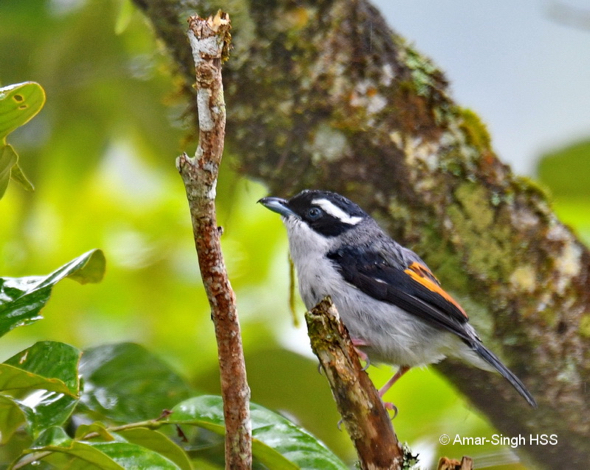
“Watched an adult male White-browed Shrike-babbler (Pteruthius flaviscapis cameranoi) and an immature male that were foraging high up – I was on a slope and the crown of the tree was at eye level.

“Largely animal prey was taken but the immature male, that was self-feeding, also took the head of sprouting moss (sporophytes – the tall, stalk-like forms of moss with a calyptra head – see image fifth from top).

“No female or other juveniles were seen; division of fledglings between parents may have been possible.

“Immature male plumage suggests that the black eye stripe, wings and tail change occur first as well as rufous-chestnut develops early.

“The head remaining grey and mantel plumage still like the females. The immature male also had a clear, whitish eye ring.

Dato’ Dr Amar-Singh HSS
Ipoh, Perak, Malaysia
29th May 2018
Location: 1,600-1,700m ASL, Cameron Highlands, Pahang, Malaysia
Habitat: A public road along primary montane forest








